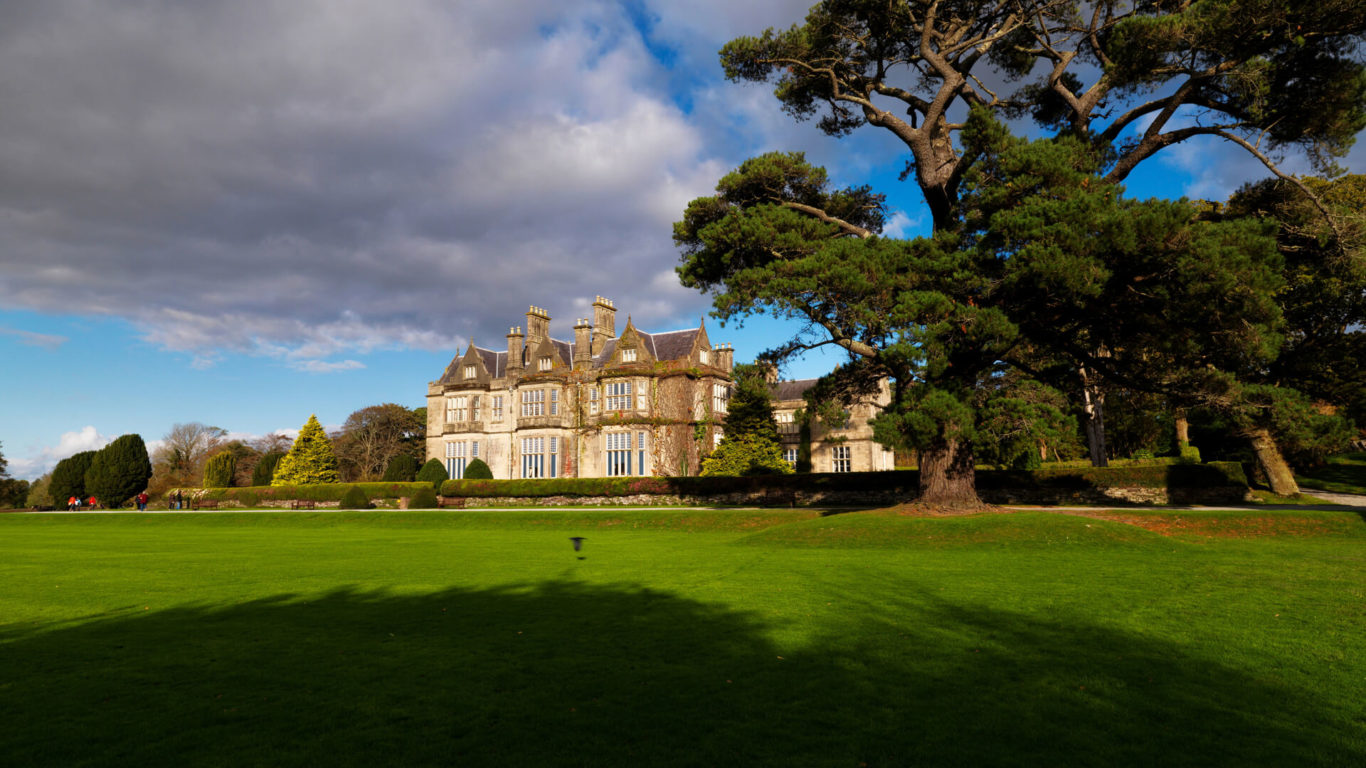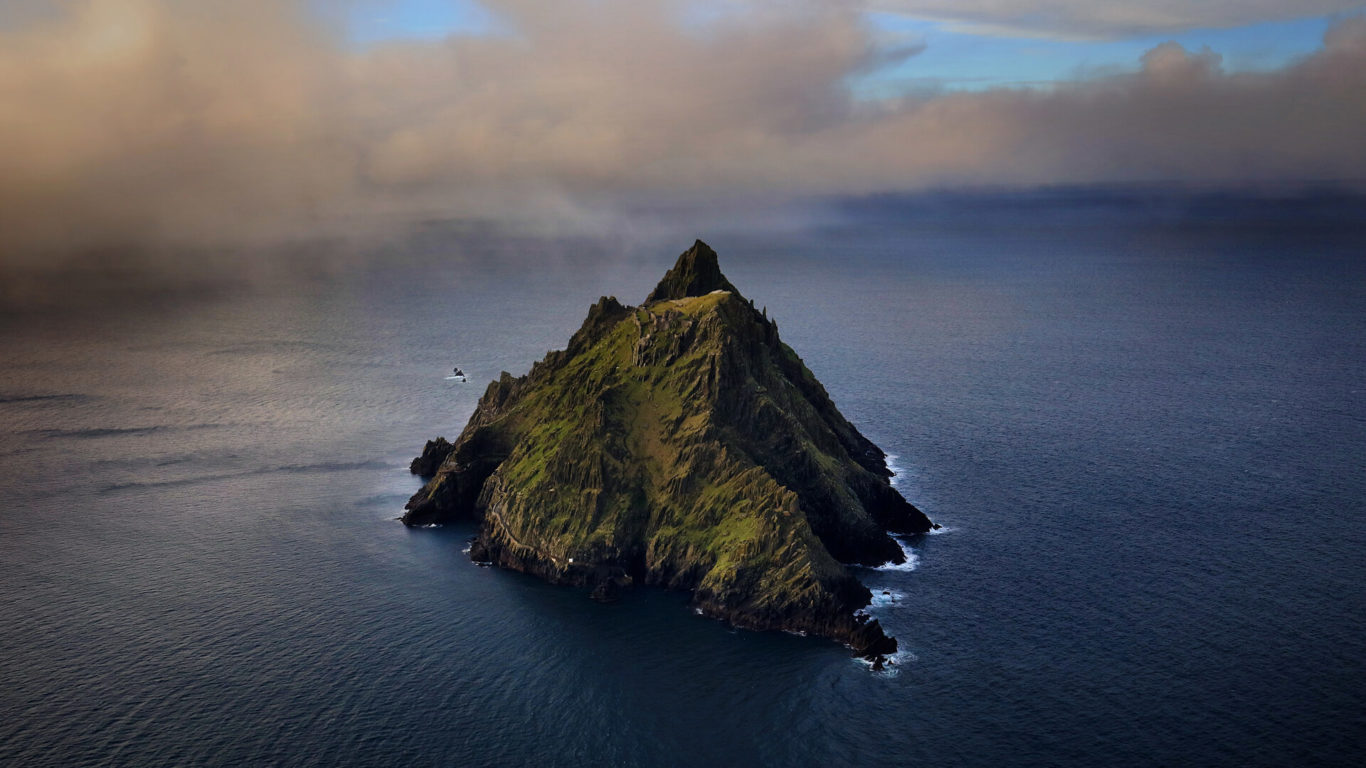Day Trips
Journey times to all places are under 2 hours
Dingle & Slea Head
The pretty fishing port of Dingle — Daingin Uí Chúis — nestles on the edge of a large natural estuary on the southwestern coast of Dingle Peninsula. A gentle resting place between mountain and sea, the ancient settlement of Dingle grew along the protected waters and sheltered calm of this natural harbour. On the southern edge of a mountain ridge that separates the east from the western end of the peninsula, all roads lead through Dingle town. With a population of 2,000 and a large hinterland, this is the hub and commercial centre for the Dingle Peninsula. From the harbour front, colourful buildings and ancient street patterns clamber up the green hilly lowlands of the Brandon mountain range.
A creative and imaginative place, Dingle is a town of many charms, known for quality food and restaurants, local producers and galleries, a friendly dolphin and vibrant streetlife. With a long history of visitors this is a cosmopolitan and welcoming small town with a great attitude to life.
The Slea Head Drive is one of the Dingle Peninsula’s most stunning routes. It takes in several famous landmarks such as Ventry Beach, pre-historic forts and beehive huts, Dingle Famine Cottage, views of the Blaskets Islands and Coumenole Beach, and Gallarus Oratory.
The Conor Pass
The Conor Pass is one of the highest mountain passes in Ireland, and provides the most dramatic and scenic way of crossing from the north to south coast of the Dingle Peninsula. This narrow, twisting road runs for 12kms between the town of Dingle on the south and Kilmore Cross on the north of the peninsula, where roads fork to Cloghane/Brandon or Castlegregory. The views from the road are breathtaking, with a glaciated landscape of mountains, corrie lakes and a broad sweeping valley spread below.
At the steepest part the road weaves its way around sharp cliff faces and passes high corrie lakes. There are some very narrow sections where two cars cannot pass, so drivers need to keep their eyes peeled when driving and be ready to stop at the wider sections. Vehicles over two tonnes in weight are prohibited from using Conor Pass to avoid difficulties in passing other vehicles.
There are two main viewing stops, one at Peddlar’s Lake on the north side and the other at the top. From the scenic car park at the summit there are fantastic views north and south of the Dingle Peninsula along the Wild Atlantic Way.
Ring of Kerry
The Ring of Kerry is one of Ireland’s best-known attractions, with good reason, for it takes visitors through magnificent natural beauty. At Iveragh’s heart is Ireland’s highest mountain range and highest peak, Corrán Tuathail – part of an ancient glacial landscape that ranks among the best in Europe. Inland, the Ring crosses Killarney National Park, with heart-stopping views of lakes and peaks, waterfalls, ancient woods of oak and yew, and Ireland’s only herd of wild native red deer. Rare white-tailed sea eagles drift overhead. To the west, seals ‘pup’ in sheltered Kenmare Bay. On the shores of Valentia Island are the Tetrapod tracks – the earliest fossil footprints in the world.
Further west still, out to sea, is an extraordinary, far-flung place of pilgrimage: Skellig Michael. One thousand three hundred years ago, early Christian monks built a remarkable hermitage at the top of this jagged ocean crag – then at the furthest limits of the known world. This mysterious and awe-inspiring place is now a UNESCO World Heritage site. It can be reached by the adventurous on a small boat, when the weather allows.
It is possible to complete the Ring of Kerry within a day, but take the time to lose yourself down byways, to stand wind-buffeted on clifftops, to watch the cloudshadows on distant mountains, to sit by a peat fire in a local pub, to wander on wide sandy beaches, to stride out on the long-distance Kerry Way, to taste the local soda bread and fresh seafood, to soak up the traditional music, the ancient history, the stories, the Irish language.
Cliffs of Moher
Experience the staggering Cliffs of Moher, Ireland’s most visited natural attraction. They stretch for 8km (5 miles) and reach 214m (702 feet) at their highest point, where you can enjoy unrivalled views of the Atlantic Ocean.
Find Hags Head, a natural rocky promontory that resembles a seated woman when viewed from the north. The Cliffs of Moher means the cliffs of the ruined fort, although the fort no longer exists. Stop by the Cliffs of Moher Visitor Experience, explore the visitor centre and 800 metres of protected cliff side pathways and viewing areas. Stand still and marvel at the towering heights of the soaring cliffs, their sheer scale and incredible impact.
We are happy to help with information or questions on day trips, call us on +353 (0)66 710 6300, email info@theashehotel.ie or ask at reception on check-in.





